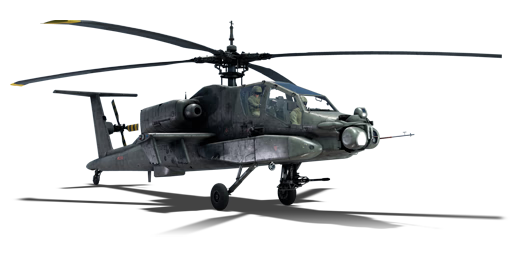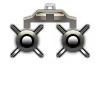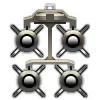



Following the cancellation of the Lockheed AH-56 Cheyenne on August 9, 1972, as a result of its huge airframe and poor all-weather performance, the US Army launched the Advanced Attack Helicopter (AAH) program. Drawing from the experience of the Vietnam War, an attack helicopter was requested with a lower minimum top speed of 269 km/h, a twin-engine configuration for better survivability, heavier weaponry, and a longer combat radius than the AH-1 Cobra already in service. Bell, the Boeing Vertol/Grumman group, Hughes, Lockheed Martin, and Sikorsky all submitted proposals for the new AAH program. In July 1973, the US Department of Defense chose Bell and Hughes as the final candidates, and both companies were instructed to construct their prototype helicopters for flight testing. Hughes' prototype YAH-64 first flew on September 30, 1975, whereas Bell's prototype YAH-63 first flew on October 1, 1975. In 1976, the YAH-64 was chosen, primarily due to its more damage-tolerant four-blade main rotor and more stable landing gear layout. Initially, the US Army intended that the new helicopter would be armed with a 30 mm cannon and 16 TOW ATGMs. However, as the still-in-development air-to-ground missile (AGM-114) Hellfire promised better range and lethality than the TOW ATGM, the anti-tank missile armament specification was later changed to 16 AGM-114 Hellfires, which became the mainstay of the US Army attack helicopter anti-armour weaponry.
Introduced in Update "Direct Hit", the YAH-64 is a two-seat, twin-engine ground attack helicopter with the gunner (front) and pilot (rear) sitting in tandem, similar to the AH-1 Cobra. Equipped with a thermal imaging device and armed with the AGM-114B Hellfires as its primary anti-armour weapon, it can easily spot targets from a long distance and engage targets as far away as 8 km using semi-active laser homing (SALH), which is significantly beyond the range of most SPAA vehicles, with the exception of some radar-guided SAM missiles. Players can also choose to equip Hydra-70 M247 rockets for light anti-armour purposes, which is made easier by the installation of a ballistic computer on board. As an early prototype of the iconic AH-64 Apache attack helicopter, the YAH-64 lacks IRCM and flare/chaff countermeasures. It also lacks any air-to-air missiles, limiting its capacity to engage air targets effectively.
| Belt | Belt filling | Armor penetration (mm) at a distance: | |||||
|---|---|---|---|---|---|---|---|
| 10 m | 100 m | 500 m | 1000 m | 1500 m | 2000 m | ||
| HEDP | 51 | 51 | 51 | 51 | 51 | 51 | |
| Name | Weight | Slot | ||||
|---|---|---|---|---|---|---|
| 19 × | 231.6 kg |  |  |  |  | |
| 2 × | 128.3 kg |  |  |  |  | |
| 4 × | 198.5 kg |  |  |  |  | |












Flight performance |
|---|
Survivability | |
|---|---|
Weaponry | |
|---|---|